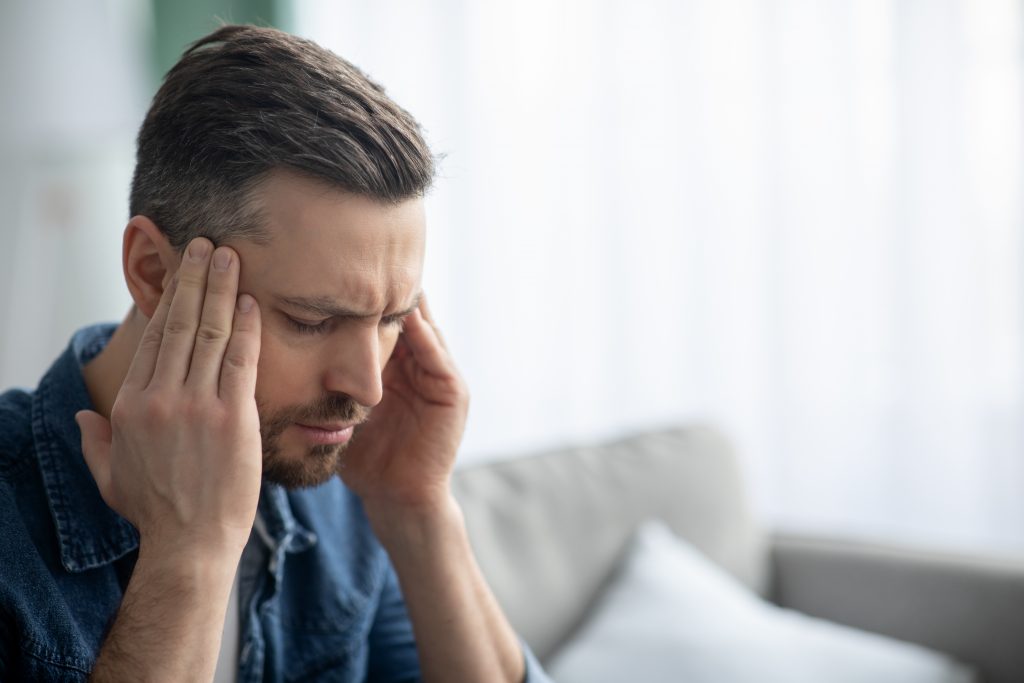September 21, 2022
Differences between Headaches and Migraines
Have you ever gotten a headache and wondered if you were experiencing a migraine? Do you have trouble telling the difference between a headache and a migraine? You aren’t alone. In fact, 50-75% of all adults ages 18-65 reported experiencing headache pain in 2015-2016.
Follow along to learn how to tell the difference between a migraine and a headache and when to seek treatment.
What is a headache?
A headache is a pain in any part of the head. Headaches have many different causes and are typically not life-threatening.
Tension Headaches
Tension headaches are usually the most common type of headache that a person can experience. Tension headaches are generally caused by stress or musculoskeletal problems and last for only a few hours. Episodic attacks can cause tension headaches to persist for several days.
Tension headaches can feel like a tightness or pressure in the head. The sensation is often described as a tight band wrapped around a person’s head. The sensation may spread from the neck up into the head as well.
Cluster Headaches
Cluster headaches are less common than tension headaches. Cluster headaches can cause reoccurring headaches to appear throughout the day for brief periods. They typically last 15 minutes to three hours.
The pain is usually centralized around one eye with tearing and redness. The nose can become blocked, and the eyelid may droop on the affected side. The pain, though brief, can be extremely severe and debilitating.
What is a migraine?
Migraines are a type of headache disorder that causes severe pain. Pain may be felt in one side of the head and can be a lifelong condition. About 12% of the American population lives with migraines. Women are three times more likely to experience migraines than their male counterparts.
If you’re experiencing a migraine, you may feel a throbbing or pulsing sensation. Migraines can also cause a variety of symptoms that can include the following:
- Nausea/vomiting.
- Weakness/fatigue.
- Sensitivity to light and sound.
- Seeing an ‘aura’ (flashing lights).
 Migraines are caused by a genetic mutation and can be triggered by the following:
Migraines are caused by a genetic mutation and can be triggered by the following:
- Stress and anxiety.
- Bright lights.
- Loud noises.
- Overwhelming smells.
- Lack of sleep.
- Caffeine or tobacco use.
- Skipping meals.
- Hormonal changes.
- Changes in the weather.
What are the differences between a headache and a migraine?
| Headache | Migraine |
| Pressure or tightness in the head that waxes and wanes. | Moderate to severe pain with a throbbing or pulsating sensation. |
| Caused by stress or musculoskeletal problems. | Caused by a genetic mutation, but can have various triggers. |
| Sudden onset. | Gradual onset, usually following a cyclical pattern. |
| Pain in the head or behind one eye. | Pain is on one side of the head. |
How can I tell if I have a headache or a migraine?
Now that you know what a headache and migraine are, you may wonder how to tell the difference between the two.
A significant indicator would be the type of pain felt. Migraines are more of a throbbing or pulsing, whereas a headache is more likely to feel like pressure or a tightening around the head. Headaches will be brief or recurrent, whereas a migraine can last up to 72 hours after onset symptoms appear.
Migraines will tend to operate on a cyclical basis as well. The following signs indicate that you’re experiencing a migraine rather than a headache:
- A person may experience cravings for food, frequent urination, rapid changes in mood, yawning, and bloating 24 hours before a migraine.
- Seeing an aura is a tell-tale indicator that you’re experiencing a migraine. This can happen just before migraine onset, or it can occur while it is happening.
- Extreme sensitivity to temperature, light, and sound. When a person experiences a migraine, they may need to lie down in a cool, dark, and quiet room until it passes.
- After the migraine has passed, you may feel exhausted and could even be confused. This is associated with a migraine as well.
 Migraine and Headache Treatments
Migraine and Headache Treatments
How do I treat a headache?
The following are treatment options for a headache:
- Over-the-counter medications like acetaminophen, ibuprofen, or aspirin.
- Reducing stress and muscle tension.
- Anti-depressants can be prescribed to help with stress or anxiety causing headaches.
How do I treat a migraine?
Treating migraines may be more complicated than treating headaches. There is currently no cure for migraines, so efforts are placed on addressing symptoms.
The following are ways that symptoms may be treated or managed for a migraine:
- Over-the-counter pain relievers.

- Prescription medications prescribed by a doctor like antidopaminergics, triptans, and corticosteroids.
- Staying hydrated.
- Finding a cool and dark place to lay down.
- Using an ice pack on the location of the pain.
- Identify and manage migraine triggers.
- Taking vitamins and getting the proper nutrients your body needs.
- Stress management.
When should I see a doctor?
You should seek a doctor for headache or migraine pain if the following occur:
- New symptoms accompany your headaches. (i.e., numbness in the legs, fever, etc.).
- You experience vision loss.
- Your headache lasts for days or weeks with no relief.
- Over-the-counter pain relievers do not help lessen the pain.
- You have jaw pain when eating.
- If you have a head injury.
- If your headache pain comes on unexpectedly and is severe.
- Difficulty speaking, swallowing, balancing, walking, or feeling drowsy.
DISCLAIMER
The information featured in this site is general in nature. The site provides health information designed to complement your personal health management. It does not provide medical advice or health services and is not meant to replace professional advice or imply coverage of specific clinical services or products. The inclusion of links to other web sites does not imply any endorsement of the material on such websites.